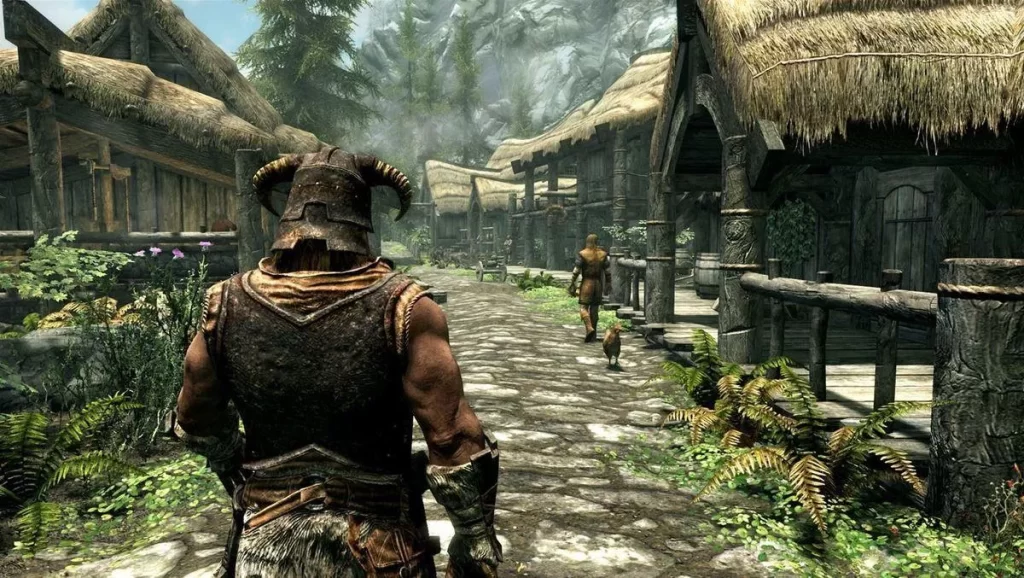Takeaway
The role of a Virtual World Game Designer is pivotal in creating immersive experiences that balance storytelling and user agency. By leveraging advanced narrative techniques and interactive design principles, these designers can craft engaging virtual environments that resonate with players on multiple levels. This article delves into the intricacies of this role, exploring the methodologies, technologies, and real-world examples that illustrate the successful integration of narrative and player choice in game design.
In the rapidly evolving landscape of video game development, the role of a Virtual World Game Designer has emerged as a critical component in the creation of engaging and immersive gaming experiences. These designers are tasked with the complex challenge of blending storytelling with user agency, ensuring that players not only consume narratives but also actively participate in shaping them. This article explores the methodologies, technologies, and real-world examples that highlight the importance of this role in contemporary game design.
The Intersection of Storytelling and User Agency
At its core, the essence of a Virtual World Game Designer lies in the delicate balance between storytelling and user agency. Storytelling in games is not merely about delivering a linear narrative; it involves creating a rich tapestry of lore, character development, and emotional engagement that players can explore. User agency, on the other hand, refers to the player’s ability to make meaningful choices that influence the game’s outcome. The interplay between these two elements is crucial for crafting an engaging virtual world.
Understanding Narrative Structures
To effectively blend storytelling and user agency, designers must first understand various narrative structures. Traditional linear narratives, where players follow a predetermined path, can be limiting in terms of player engagement. In contrast, branching narratives allow players to make choices that lead to different outcomes, enhancing their sense of agency. Games like “The Witcher 3: Wild Hunt” exemplify this approach, where player decisions significantly impact the storyline and character relationships, leading to multiple endings based on the choices made throughout the game.
Research conducted by the International Game Developers Association (IGDA) in 2020 revealed that 70% of players prefer games that offer meaningful choices that affect the narrative. This statistic underscores the importance of integrating user agency into storytelling, as players are increasingly seeking experiences that allow them to shape their own narratives.
Technological Innovations in Game Design
The advent of advanced technologies has further enabled Virtual World Game Designers to create more immersive and interactive experiences. Tools such as Unreal Engine and Unity provide robust frameworks for developing complex narratives and dynamic environments. These engines support features like procedural generation, which can create unique experiences for each player based on their choices.
For instance, “No Man’s Sky,” developed by Hello Games, utilizes procedural generation to create an expansive universe with billions of planets, each offering unique ecosystems and narratives. Players can explore these worlds at their own pace, making choices that influence their journey and the game’s unfolding story. This level of user agency, combined with a rich narrative backdrop, exemplifies the potential of modern game design technologies.

A vast universe with unique ecosystems and narratives in No Man’s Sky.
Case Studies: Successful Integration of Storytelling and User Agency
1. “Life is Strange”
“Life is Strange,” developed by Dontnod Entertainment, is a prime example of a game that masterfully blends storytelling with user agency. The game employs a unique rewind mechanic that allows players to alter their choices and explore different narrative paths. This mechanic not only enhances player engagement but also emphasizes the consequences of their decisions, creating a profound emotional impact.
According to a study published in the Journal of Game Design and Development Education, players reported a 90% satisfaction rate with the narrative choices in “Life is Strange,” highlighting the effectiveness of integrating user agency into storytelling. The game’s episodic format further allows for deep character development and emotional resonance, making it a benchmark for narrative-driven games.
2. “The Elder Scrolls V: Skyrim”
Another exemplary case is “The Elder Scrolls V: Skyrim,” developed by Bethesda Game Studios. This open-world RPG offers players unparalleled freedom to explore its vast world, engage in quests, and develop their characters. The game’s narrative is not confined to a single storyline; instead, it encompasses numerous side quests, factions, and lore that players can discover at their own pace.

Skyrim allows you to develop characters and explore numerous side quests.
Data from a 2021 survey conducted by the Pew Research Center indicated that 65% of gamers enjoy open-world games for their freedom of exploration and choice. “Skyrim” capitalizes on this preference by allowing players to craft their own stories within the game’s rich narrative framework, reinforcing the importance of user agency in modern game design.
Challenges in Balancing Storytelling and User Agency
Despite the advantages of integrating storytelling and user agency, Virtual World Game Designers face several challenges. One significant challenge is ensuring that player choices feel meaningful without overwhelming the narrative structure. Designers must carefully craft branching paths that provide players with a sense of agency while maintaining a coherent and engaging story.
Additionally, the complexity of player choices can lead to narrative inconsistencies if not managed properly. A study by the University of Southern California’s Game Innovation Lab found that 40% of players reported feeling confused by branching narratives that lacked clear consequences for their choices. This highlights the need for designers to implement robust systems that track player decisions and ensure that the narrative remains cohesive.
Future Trends in Virtual World Game Design
As technology continues to advance, the future of Virtual World Game Design will likely see even more innovative approaches to storytelling and user agency. The rise of artificial intelligence (AI) in game design presents exciting possibilities for creating adaptive narratives that respond to player behavior in real-time. AI-driven systems can analyze player choices and dynamically alter the narrative, providing a personalized experience that enhances engagement.
Moreover, the integration of virtual reality (VR) and augmented reality (AR) technologies is set to revolutionize the way players interact with narratives. Games like “Half-Life: Alyx” demonstrate the potential of VR to create immersive storytelling experiences that allow players to physically engage with the game world. As these technologies become more accessible, Virtual World Game Designers will have new tools at their disposal to craft even more compelling narratives that prioritize user agency.
Conclusion
The role of a Virtual World Game Designer is crucial in shaping the future of interactive storytelling in video games. By effectively blending narrative techniques with user agency, designers can create immersive experiences that resonate with players on multiple levels. As demonstrated through real-world examples like “Life is Strange” and “Skyrim,” the integration of meaningful choices and rich storytelling is essential for engaging modern gamers.
As the industry continues to evolve, embracing new technologies and methodologies will be key to overcoming the challenges of balancing storytelling and user agency. By staying attuned to player preferences and leveraging innovative tools, Virtual World Game Designers can craft experiences that not only entertain but also empower players to become active participants in their own narratives.

